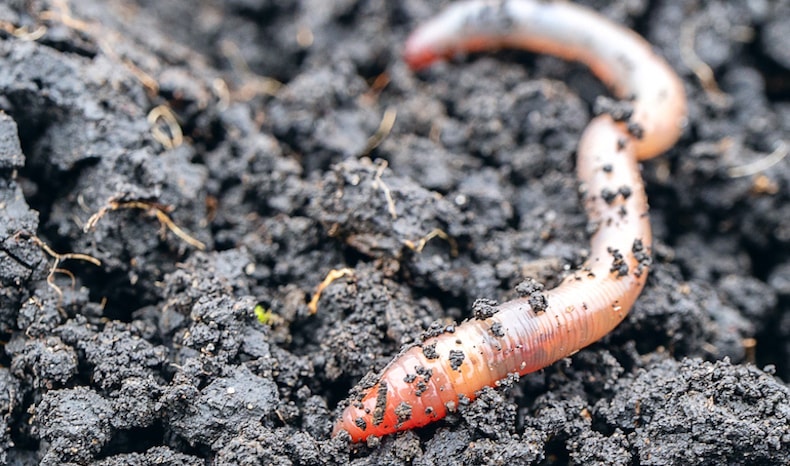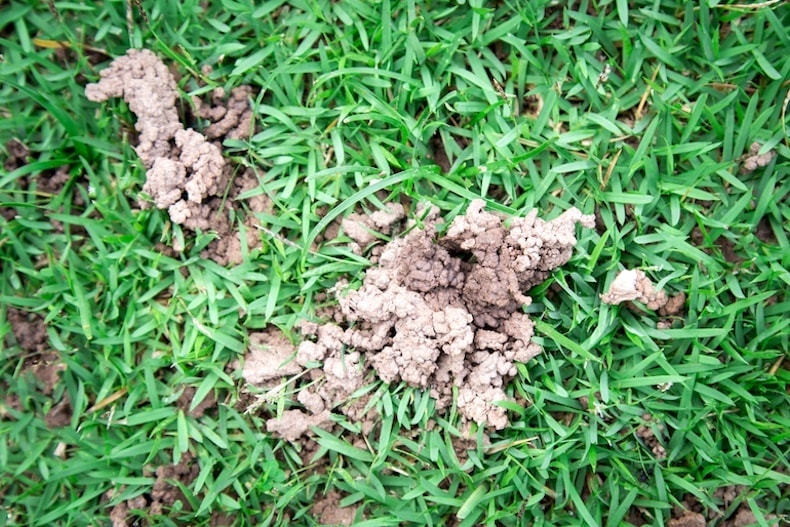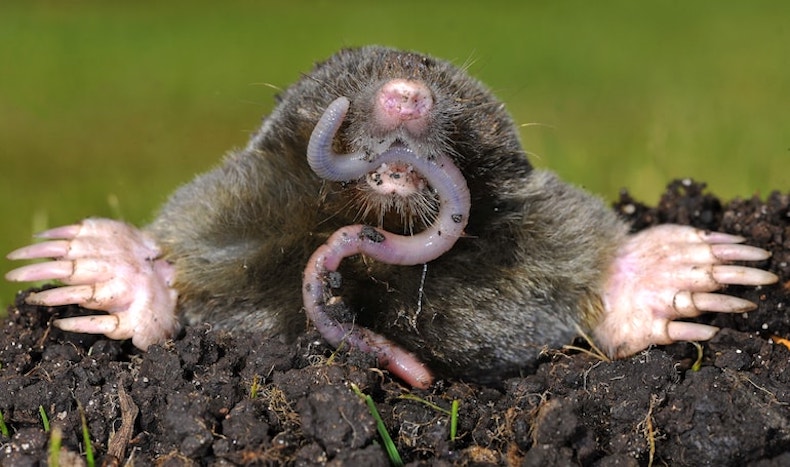Garden pests - Worms

Worms can cause problems in the garden
Image: Andrei Metelev/Shutterstock
Worms are often an organic gardener’s best friend. But their ability to create muddy deposits on lawns can create problems for even the most open-minded of gardeners. Read on to find out more about this common garden inhabitant.
What do worms do?
Worms are soil-dwelling creatures that eat decaying plant matter, but do not damage growing plants. Many species come up to the surface to eat organic matter on the surface and pull it down into the ground through their tunnels. Both horizontal and vertical, the tunnels play an important role in maintaining soil structure and the worms’ eating habits introduce a myriad of rich nutrients to the environment, boosting soil fertility.
There are around 16 species of worm in the UK. Typically, they can be active throughout the year, but you’re less likely to see evidence of them during particularly hot or dry weather as they go dormant.
How to recognise worm activity

Keep an eye out for worm casts on your lawn
Image: CHAINFOTO24/Shutterstock
Some species of worms leave small mounds of earth on your lawn, also known as ‘casts’. These excretions of muddy soil – easily differentiated from deposits made by ants or mining bees by the fine muddy consistency and the coiled shape (particularly of fresh casts) – are signs that the worms are keeping your soil healthy. But they can be a nuisance.
What damage can worms do?

Bountiful worm activity can attract moles
Image: CezaryKorkosz/Shutterstock
Worm activity in lawns is particularly common in the autumn and winter months when the soil is wet. The casts are the main problem as they look unsightly and can cause muddy conditions when they’re stepped on.
The casts themselves can be removed by sweeping them off the lawn or breaking them up with a rake (with the teeth facing upwards so as not to damage the lawn). But make sure that they’re dry before you start, otherwise they will just smear across the grass, which can create conditions that support the growth of weeds and moss. For this reason, it’s best to keep off the grass during wet weather when casts are a particular problem.
High levels of worm activity can also attract moles, which feed on worms. But there are mole repellers that can help control the problem.
How do I get rid of worms in my lawn?

Keep on top of scarifying your lawn to limit vigorous worm activity
Image: Lawn Spikes from Thompson & Morgan
While worms play a useful role in the garden, there are a few ways to discourage them from excessively messing with your lawn.
Make your lawn more acidic - worms prefer a neutral to alkaline soil pH, so adding fertilisers that contain sulphate of iron will lower the pH and make the lawn surface less attractive to them.
Limit their food supply - worms enjoy feeding on organic matter in lawns, often referred to as 'thatch'. To prevent the accumulation of thatch, remove clippings when you cut the grass and rake up fallen leaves in the autumn. Scarifying your lawn, which removes moss, will also help to reduce thatch.
Other pages you might like
See all pests & diseases guides
Individual guides
Pests
Sign Up For Exclusive Special Offers




© 2024 Thompson & Morgan. All rights reserved. A division of Branded Garden Products Limited.



